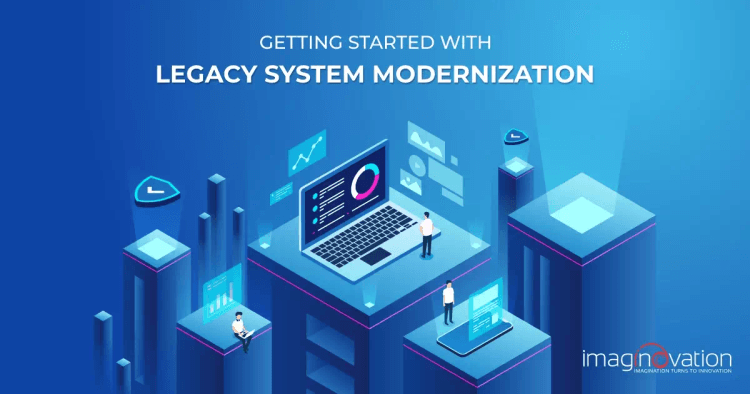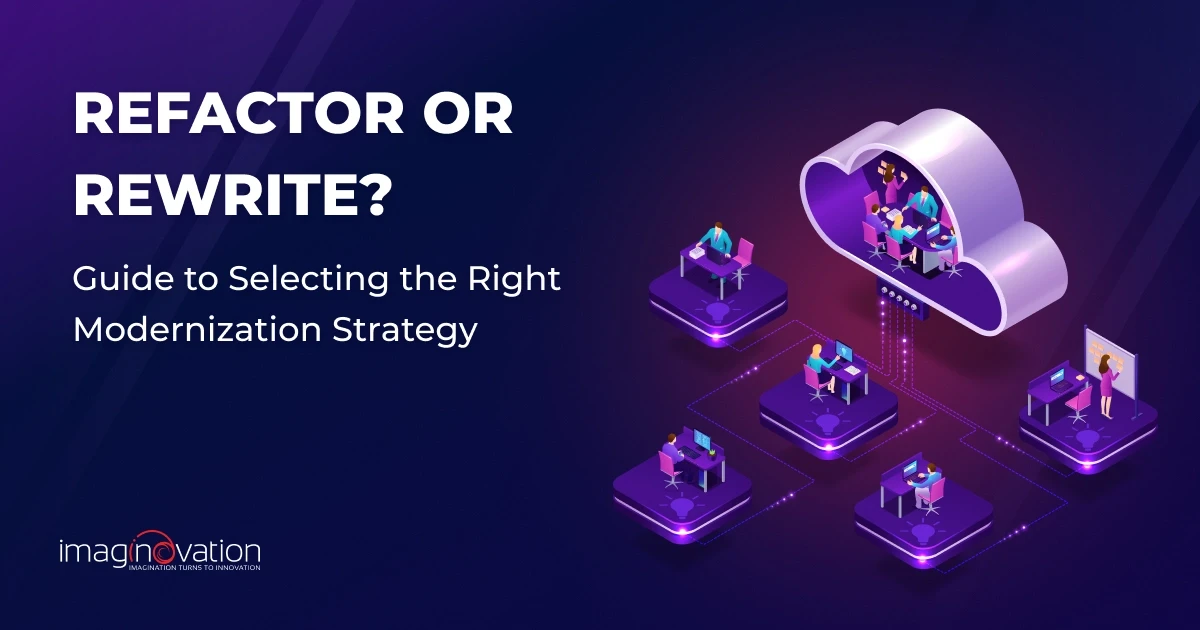Since the last few decades, we have been experiencing a dramatically accelerating pace in developing and adopting new technologies in business processes. What was once a perfect business solution for your company has soon become outdated, obsolete, and useless.
Your out-of-date technologies, which were popularly available at the time of project building, now impose restrictions on speed, security, design, and scalability.
Moreover, in the face of technological innovations and disruptions, businesses need to reconfigure their approach and modernize their legacy systems to stay relevant.
However, legacy system modernization is much more than just updating your systems.
If you've already decided to modernize your legacy system but are unsure of where and how to begin, this blog post is for you.
We will discuss the right legacy modernization approach and the benefits it can bring.
What is Legacy System Modernization?
Legacy systems refer to old and outdated applications, processes, software, or infrastructure that are critical to day-to-day business operations.
It’s incorrect to deem them useless because of their age. Instead, they are considered obsolete because they no longer serve the purpose of a business or function well in a changing world with evolving requirements.
Moreover, legacy systems require a big budget and a lot of effort to maintain, improve, and integrate with the latest systems. Therefore, modernization becomes a necessity.
Legacy systems require modernization; otherwise, they can start exhibiting critical issues anytime.
While you may feel that such legacy systems are essential because they still meet the requirements they were initially designed for, these systems are based on obsolete technologies that are no longer commonly used.
For example, the USA IRS (Internal Revenue Service) still uses 60-year-old computer codes written in an assembly language to run tax filing processes. With every passing year, the number of programmers who understand such codes is dwindling. Besides, there have been instances of failure in processing systems, and maintaining them has become expensive.
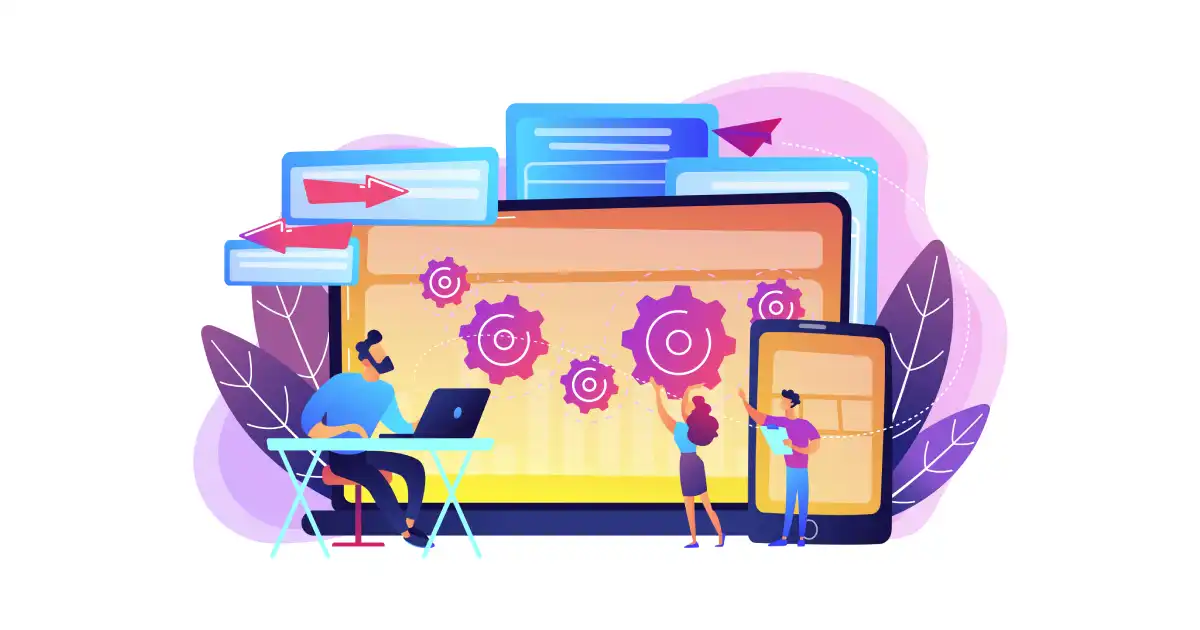
Legacy modernization is, therefore, a process by which you can update and optimize your business systems to achieve operational efficiency, address technology constraints, meet customer expectations, and support integration with newer platforms.
Thus, modernizing your legacy systems involves improving your enterprise's existing digital platform with the support of newer, modern, and better solutions.
You can compare legacy transformation to a modern-day application update. It merges the strength of old business applications with updated technologies to build a platform that aligns well with business objectives.
There are many ways you can move toward successful legacy modernization, guided by the strategic priorities of your enterprise.
For example, you may opt to completely rip and replace your legacy systems with a new system, or you may choose to adopt specific technologies and processes to enhance your existing system.
Whatever the case may be, modernizing legacy systems is about bringing your entire enterprise up to speed with the current digital environment.
Why is It Necessary to Update the Legacy System?
Many companies have understood the need for legacy modernization and have started taking steps toward it.
According to a report by Logicalis, more than 40% of CIOs considered “complex legacy technology” a significant barrier to their digital transformation aspirations. Moreover, the majority who were surveyed confirmed that their organizations' digital transformation was their prime focus. More than half had plans to change their existing systems to overcome obstacles in their digital transformation endeavors.
Let’s dive deeper into the reasons why you should consider updating your legacy systems.
The cost of maintaining a legacy system becomes burdensome with time.
There are expenses related to housing outdated legacy systems.
Companies that use older legacy infrastructure face difficulty getting timely IT solutions. There will come a point where you'll be spending a lot of money to maintain your legacy systems—even more than what you would have spent if you had updated your system on time.
For example, a Government Accountability Office report reveals that approximately 337 million USD is being spent annually to maintain the federal government's ten legacy systems.
Because of the complicated codebase and functionality of legacy software, updating it would require more time and financial resources than modern software would.
Moreover, most legacy systems need expensive hardware and infrastructure to maintain as they age. Legacy infrastructure modernization is thus a necessity. Maintaining legacy data that is scattered across multiple databases is also a cost-intensive exercise.
Also Read: The Cost of Not Upgrading Business Apps to New Technologies
So, the expenses saved by modernizing your legacy applications can come in different forms—lowered maintenance requirements of updated systems, fewer security issues, and reduced overhead.
The dwindling security of legacy systems is a considerable risk.
A lack of security updates (often provided by the system vendor) is one of the most significant risks of using legacy systems. In addition, many IT issues, such as handling vulnerable software/applications/infrastructure, can be tricky when you're left unassisted.
Moreover, cybersecurity is a concern for most legacy applications. Outdated legacy applications usually have gaps that allow hackers access to their network.
Such attacks by hackers can create a business-wide bottleneck in your company, leading to immense revenue loss.
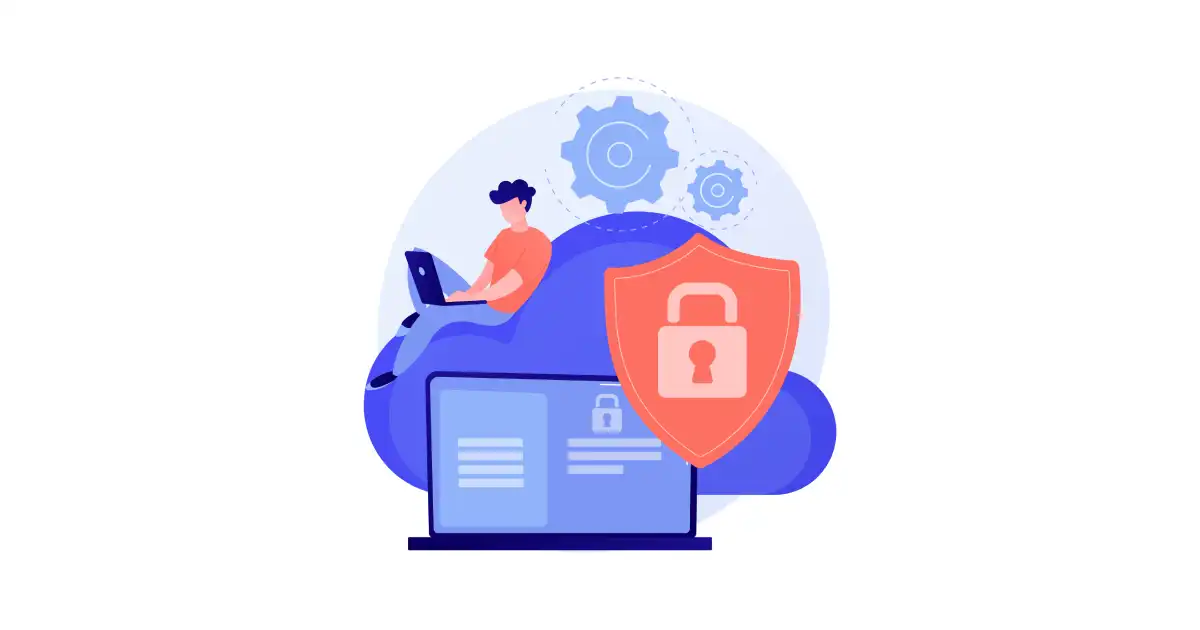
We still remember the terrible WannaCry ransomware attack in May 2017, which exposed the vulnerability of old systems not supported by Microsoft. As a result, over 300,000 machines operating on older Windows OS—XP, 8, and Server 2003—were affected by this malware in different countries because they all lacked security updates.
Technology companies combat this type of problem by regularly releasing security updates for at-risk software. However, once a legacy system stops receiving support, you won’t get any security patches. In addition, backup and disaster recovery become challenging. You’ll be worried about substantial data loss.
There is a growing shortage of tech talent that supports legacy applications.
Legacy systems are outdated, and they require specific skills and expertise. As the technology becomes obsolete, so does the skillset of professionals who manage it.
With time, you may struggle to find skilled professionals for these systems. The reason—young and upcoming developers are focused on learning new technology, while most COBOL and other assembly language developers who’ve been working on legacy systems are retiring. Plus, many old, complex applications lack proper documentation.
While seasoned IT professionals gear up for retirement, the companies that depend on them face a skills shortage.
So, in the future, finding people with the required qualifications to manage legacy systems will be difficult and expensive for companies.
Legacy systems don’t comply with modern regulatory compliance requirements.
If your enterprise must follow specific regulatory compliances, legacy systems with outdated technology will prove costly.
Compliance standards, such as HIPAA, GLBA, PCI, and others, require that the technology your business processes use works well with them.
If it doesn't, you may face severe repercussions in the form of fees and penalties, especially if your application experiences data breaches due to security holes in your legacy system.
Moreover, laws and regulations related to data storage and protection keep evolving and changing with time. So, you must readjust your system to adhere to these regulatory requirements.
Integration issues in legacy systems: "old" and "new" tech rarely work together.
Modern software platforms heavily rely on various third-party APIs to access capabilities such as geolocation, data sharing, user authentication, and more. These APIs allow you to use existing, proven solutions at a low cost.
For example, the Uber application relies on data provided via the Google Maps API instead of Uber developing its solution for navigation by the drivers.
These technologies are ready for integration by default. However, obsolete and older legacy technologies lack compatibility with third-party integrations.
If you still try to connect your legacy software to a third-party service, you’ll need to build custom APIs, which will require significant time and a lot of custom code. Even then, the final integration may not work as well as you expected. With incompatible legacy systems, you will keep losing revenue and customers.
Legacy systems slow down business efficiency and growth.
When your business grows, you’ll have changing technology needs.
Ask yourself: “Can your legacy system support the increasing production capacity and your company’s growth?”
With a constantly evolving business, your system should keep up with the pace. If not, you’ll be forced to align your business with your legacy system, and THAT will not be a good idea. It will ultimately “stunt” the growth of your business.
Businesses bound to legacy systems lack the agility to adapt to upcoming challenges.
It isn’t easy to migrate from tedious legacy IT to agile and digitally-enabled modern IT. However, it is still necessary to meet the latest IT demands. Because of their inability to be updated and modified, legacy systems hold back innovation, resulting in losses. Moreover, outdated legacy systems are less efficient, which hurts your business's overall productivity.
Legacy systems lead to lost business opportunities.
If you decide to keep investing in your legacy software’s maintenance and use, you leave little room for innovations in your business.
When you do not adopt newer technologies and business processes, you are stuck with an old system, letting your business's better and more unique opportunities go unnoticed. This means your competitors will find opportunities to outperform you and acquire your market share.
In a business world that’s increasingly defined by technology, your system’s performance, integrations, and support determine whether you gain new customers or lose them to your competitors.
These are enough reasons not to hang on to an old and outdated system only because you want to save a little bit of money.
Instead, go for legacy modernization.
How to Start Legacy System Modernization?
The Mainframe Modernization Business Barometer report confirmed that 74% of organizations that started a legacy system modernization journey failed to complete it.
Following the right approach is key to successful Legacy System Modernization in 2025.
Steps to start legacy system modernization
If you think your legacy systems are creating hurdles in your company's digital transformation, here is a step-by-step process to follow.
This will help you reduce expenses and become more agile.
Let’s check all the steps quickly.
1. Evaluate your legacy systems with six drivers
Before implementing any legacy modernization techniques, you must assess your system's present capabilities and adaptation, along with future business requirements.
Carefully think about the parts of your systems that are still functioning well and have stood the test of time. After careful evaluation, you will understand if the entire system needs an upgrade or if only some specific components do.
Remember, legacy modernization initiatives are driven by issues and concerns created by outdated functionality, architecture, and technology.
Evaluate your IT application based on the following legacy modernization factors. These are the driving factors that compel enterprises to explore different system modernization strategies.
| No | Driver | Driven By | What does it imply? |
| 1 | Business fit | Business Perspective | Your company’s IT growth and innovations are driven by its business vision/goals. If your legacy system no longer meets the new requirements imposed by evolving digital needs, you must modernize it to align and fit well so that it stays relevant. Upgrade it so that it evolves and provides better business value. Check if your legacy solution lacks the agility to evolve and keep pace with the changing demands. Such solutions can be cost and risk liabilities for you. |
| 2 | Business value | ||
| 3 | Agility | ||
| 4 | Cost | IT Perspective | There is always pressure to lower the operating costs of businesses. That is a significant factor for modernization efforts by companies. Check if the legacy technology/system is too complex to modify and update. Then it's time to make a decision. If your legacy system’s security, compliance, or scalability is being compromised, it’s time to go for modernization. |
| 5 | Complexity | ||
| 6 | Risk |
2. Assess modernization options
Once you’ve identified the problem areas to be resolved, look at the various modernization options. First, let's check the different modernization options based on the ease of implementation.
Let’s take a quick look and assess which one is easier, less risky, and the impact it will have on your system.
- Encapsulate. If your application generates excellent business value but is constrained by an outdated platform, go for this option. It is also known as the 'wrapper approach.' With this method, you can create a new wrapper or layer around your existing application and enhance its capabilities with the help of APIs. It is the best way to extend the life of your current application.
- Rehost. With the help of its Lift and Shift philosophy, rehosting redeploys your application components to other infrastructure (physical, virtual, or cloud) without altering its code or features.
- Replatform. Migrate your app components to a new runtime platform, making minimal modifications to the code, but not to the code structure or functions.
- Refactor. It restructures and optimizes the existing code of your application (but not its external behavior) to remove technical debt. In addition, it improves the nonfunctional attributes of the app, making it suitable for future modernization endeavors.
- Rearchitect. Here, you can materially alter the code of legacy elements to shift them to new application architecture and exploit better capabilities.
- Rebuild. This is about redesigning or rewriting the app component from scratch while preserving its scope and specifications. Its purpose is to rebuild a legacy system from start to finish while keeping the same specs and a similar design in place, and updating the critical aspects of your legacy system.
- Replace. If a custom solution is already available that can deliver more value, go for the replacement technique. Remove the legacy application component altogether and replace it with a custom-made, off-the-shelf solution that serves the purpose.
3. Select a modernization approach that has the highest impact and value
The final step would be to choose the right modernization approach by mapping all the available modernization options. Consider their impact on legacy architecture, technology, function, costs, and risks.
Weigh all the given options and identify how they will affect the system with less effort while still producing maximum positive impact.
Strategies for legacy system modernization
There is no need to build new tech stacks for your company from scratch. You can stay relevant and competitive with only the required updates to your system. Of course, everything depends on the problem you're trying to solve.
As you embark on the legacy modernization journey, you must follow the approaches mentioned below.
1. Modernize your mindset
It’s about time you start thinking of software as a strategic business tool and not just an IT asset.
It requires a mindset shift from the old way of thinking about IT applications to a new way of thinking about business systems. Think about how these systems support your business. Which application is business-critical? Does it help generate revenue?
2. Know which type of modernization journey you are on
Organizations like yours can embark on different application or software modernization transformation journeys.
- Datacenter transformation – It involves automating data centers and migrating to the cloud.
- DevSecOps transformation – This is about quickly and frequently delivering high-quality, secure, and compliant code to production.
- Modernizing application architecture – This involves practices like microservices architectures or API-first design.
3. Build a modernization timeline
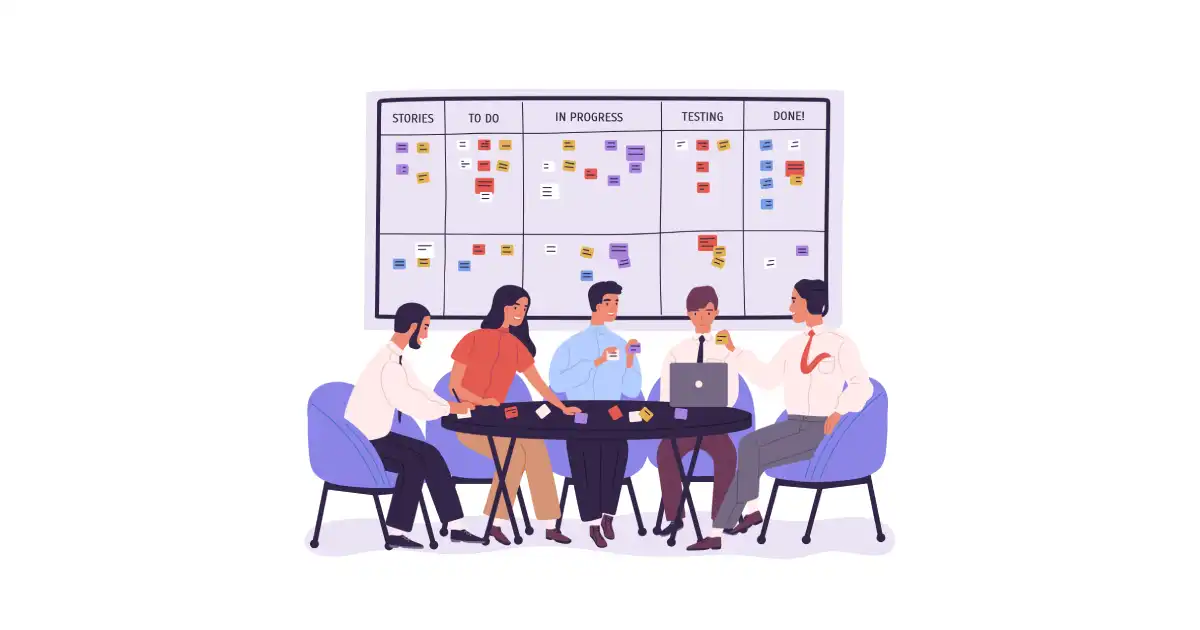
As you build the timeline for the modernization endeavor, consider everything.
- What did your needs evaluation reveal?
- How critical is the modernization process for your business?
- Are you willing to wait and delay the transformation until the rest of the milestones are completed?
- What resources are needed?
Walk yourself through all these questions and define a timeline that perfectly fits your needs.
4. Document all the changes
Documenting the modernization process is essential. However, you must note that documentation doesn’t end when modernization begins.
You must record any changes you introduce to the process—this will prepare you for any future growth and technical revisiting you may be doing later.
Modernize Your Legacy Systems with Imaginovation
Migrating from a legacy system to a newer, modern one can be unsettling, but trust us, it brings great benefits to your business. Legacy modernization services helps you keep up with the latest technologies and gain better business value.
If you want to know if your legacy system needs an update, contact us at Imaginovation. We’ll be happy to help you stay competitive with modern and peak-performing technology.
Imaginovation is an award-winning software development company with vast experience crafting remarkable digital success stories for diverse companies. Let's talk.
Download Ebook: A Complete Guide to Modernizing Legacy Software
Ready to build an app, but not sure where to start?
We've got you covered. Click the button below to get started.

